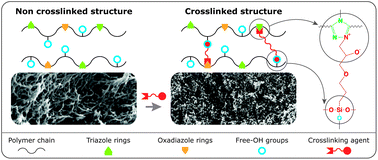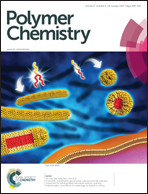Crosslinked copolyazoles with a zwitterionic structure for organic solvent resistant membranes
Abstract
The preparation of crosslinked membranes with a zwitterionic structure based on a facile reaction between a newly synthesized copolyazole with free OH groups and (3-glycidyloxypropyl)trimethoxysilane (GPTMS) is reported. The new OH-functionalized copolyazole is soluble in common organic solvents, such as tetrahydrofuran (THF), dimethylsulfoxide (DMSO), N,N′-dimethylformamide (DMF) and N-methyl-2-pyrrolidone (NMP) and can be easily processed by phase inversion. After crosslinking with GPTMS, the membranes acquire high solvent resistance. We show the membrane performance and the influence of the crosslinking reaction conditions on the thermal stability, surface polarity, pore morphology, and solvent resistance. By using UV-spectroscopy we monitored the solvent resistance of the membranes in four aggressive solvents (THF, DMSO, DMF and NMP) for 30 days. After this time, only minor changes (less than 2%) were detected for membranes subjected to a crosslinking reaction for 6 hours or longer. Our data suggest that the novel crosslinked membranes can be used for industrial applications in wide harsh environments in the presence of organic solvents.


 Please wait while we load your content...
Please wait while we load your content...